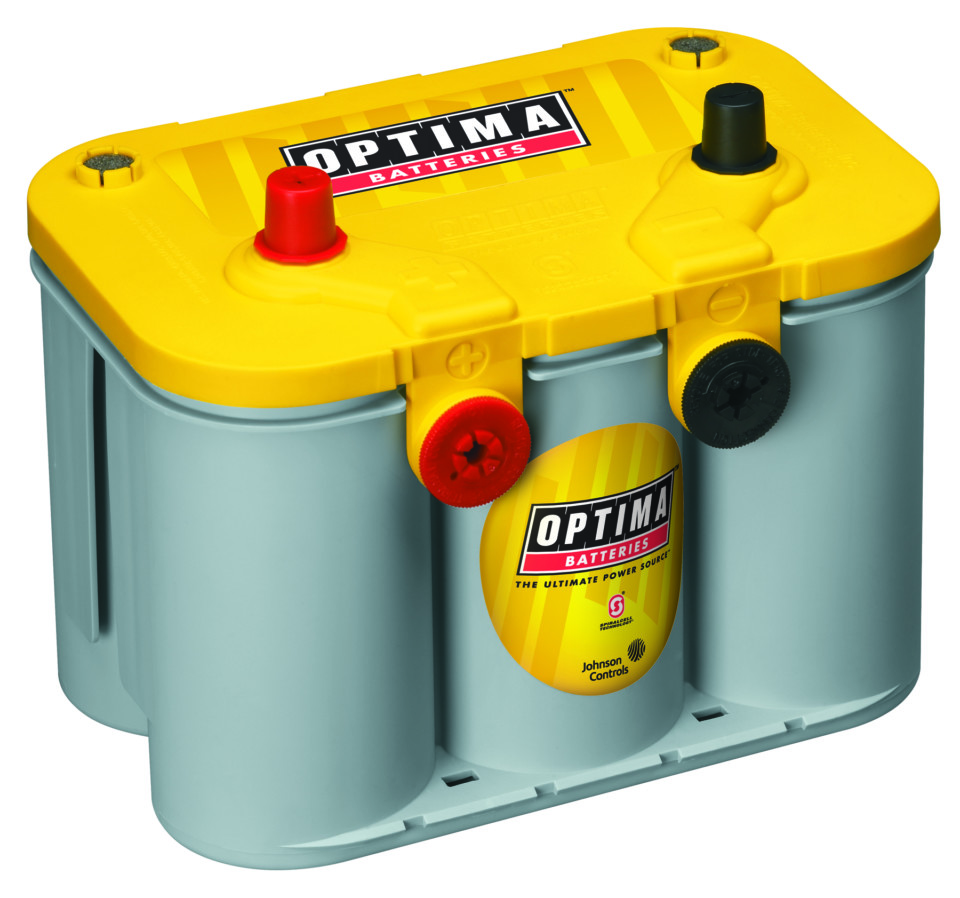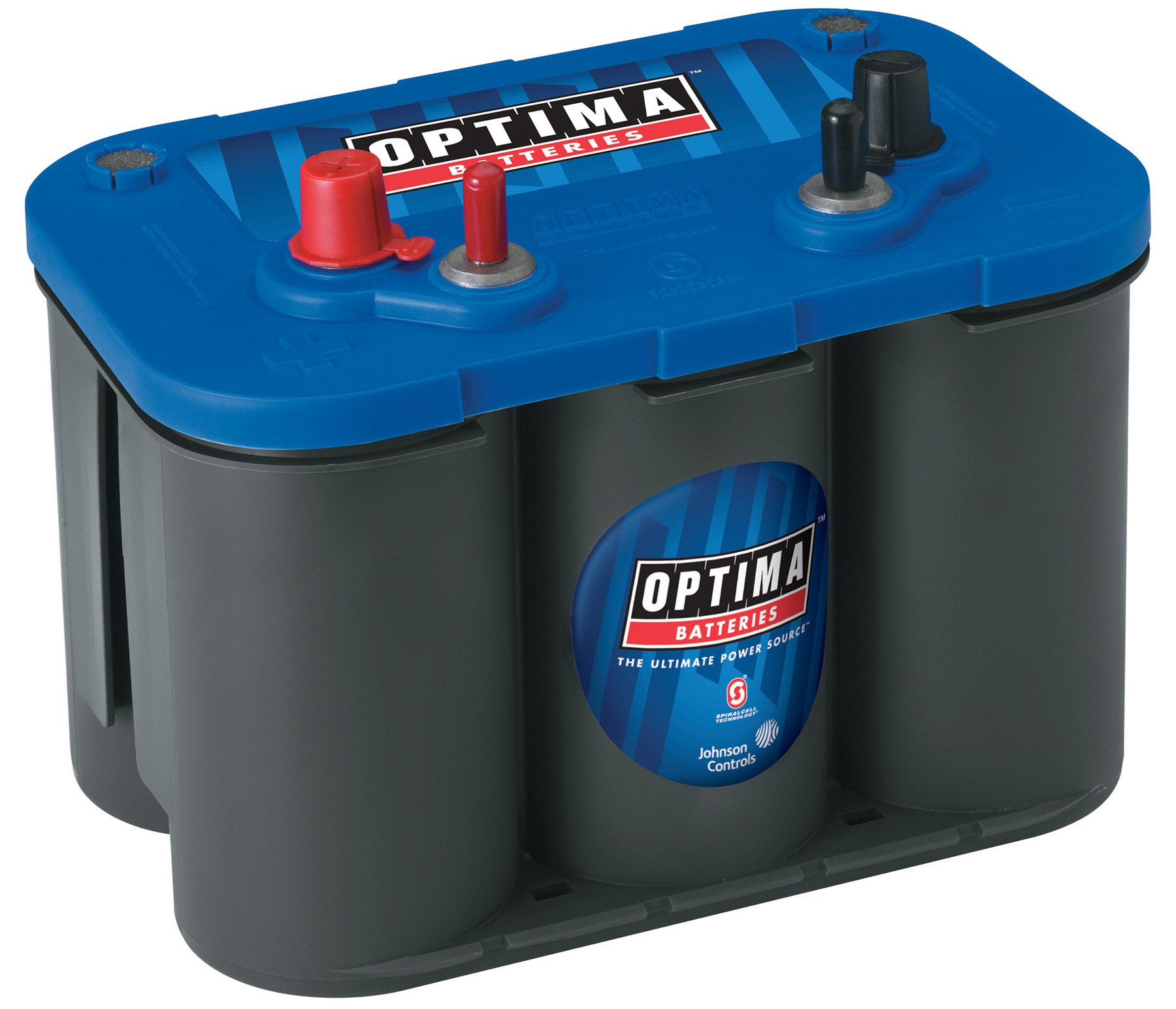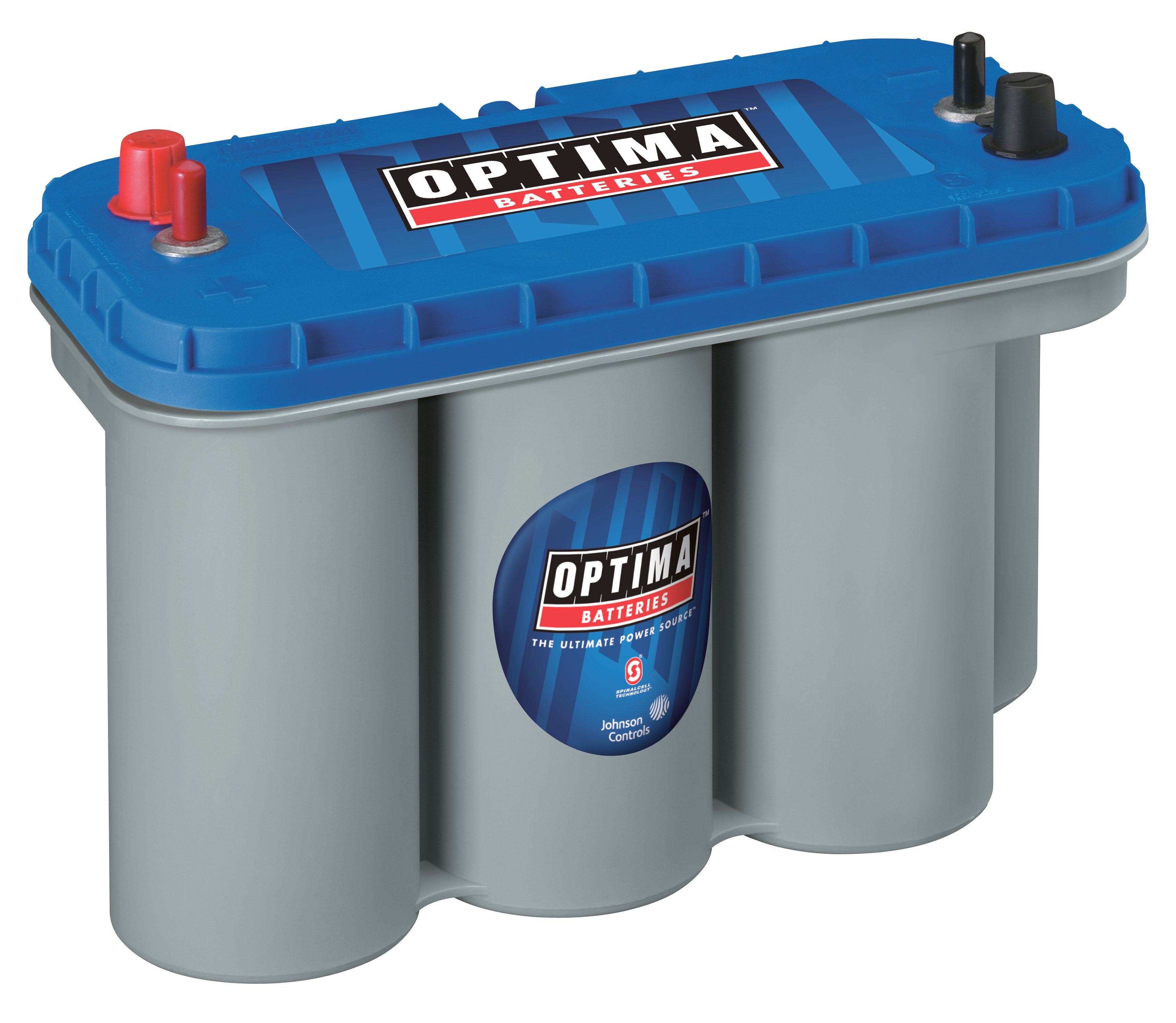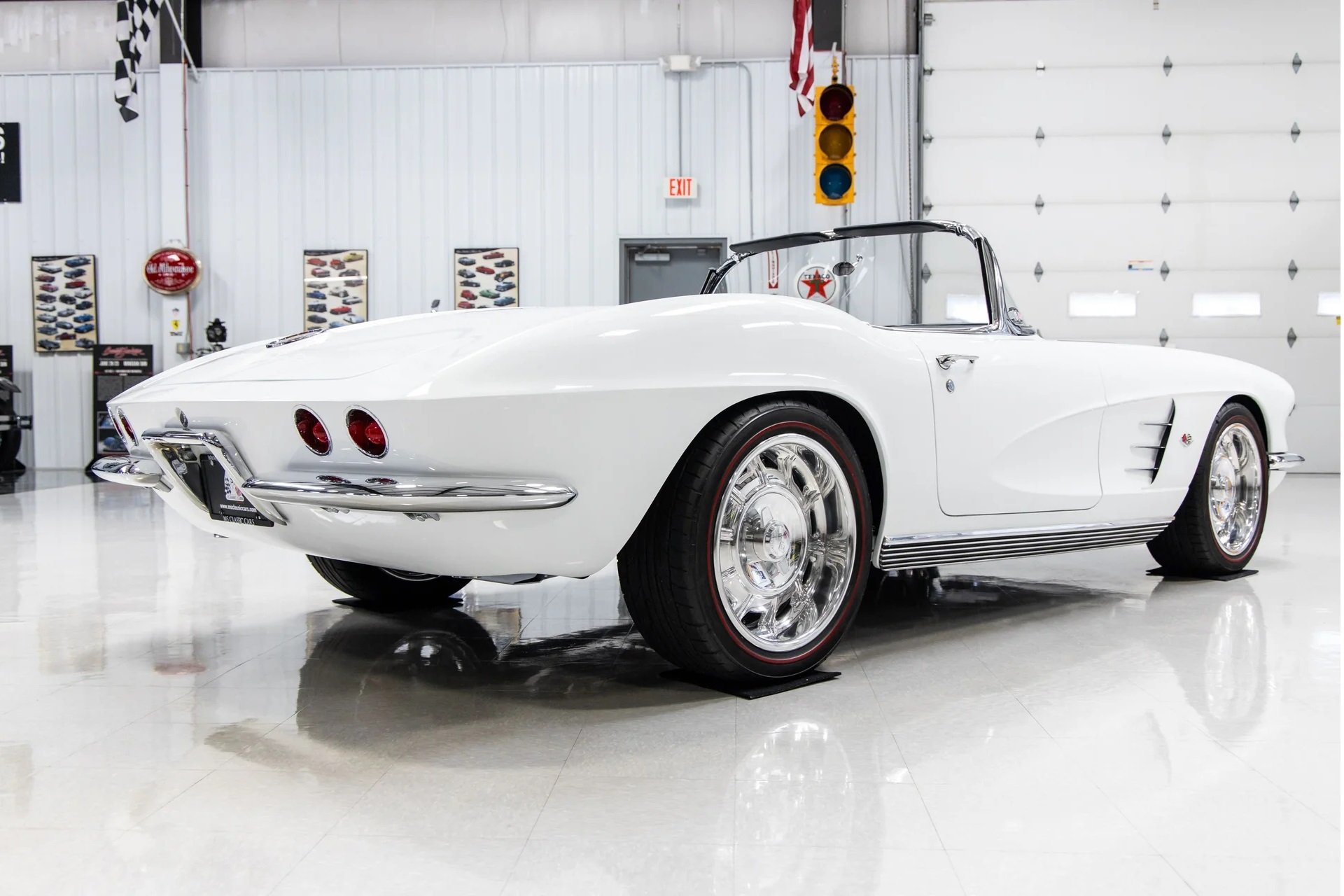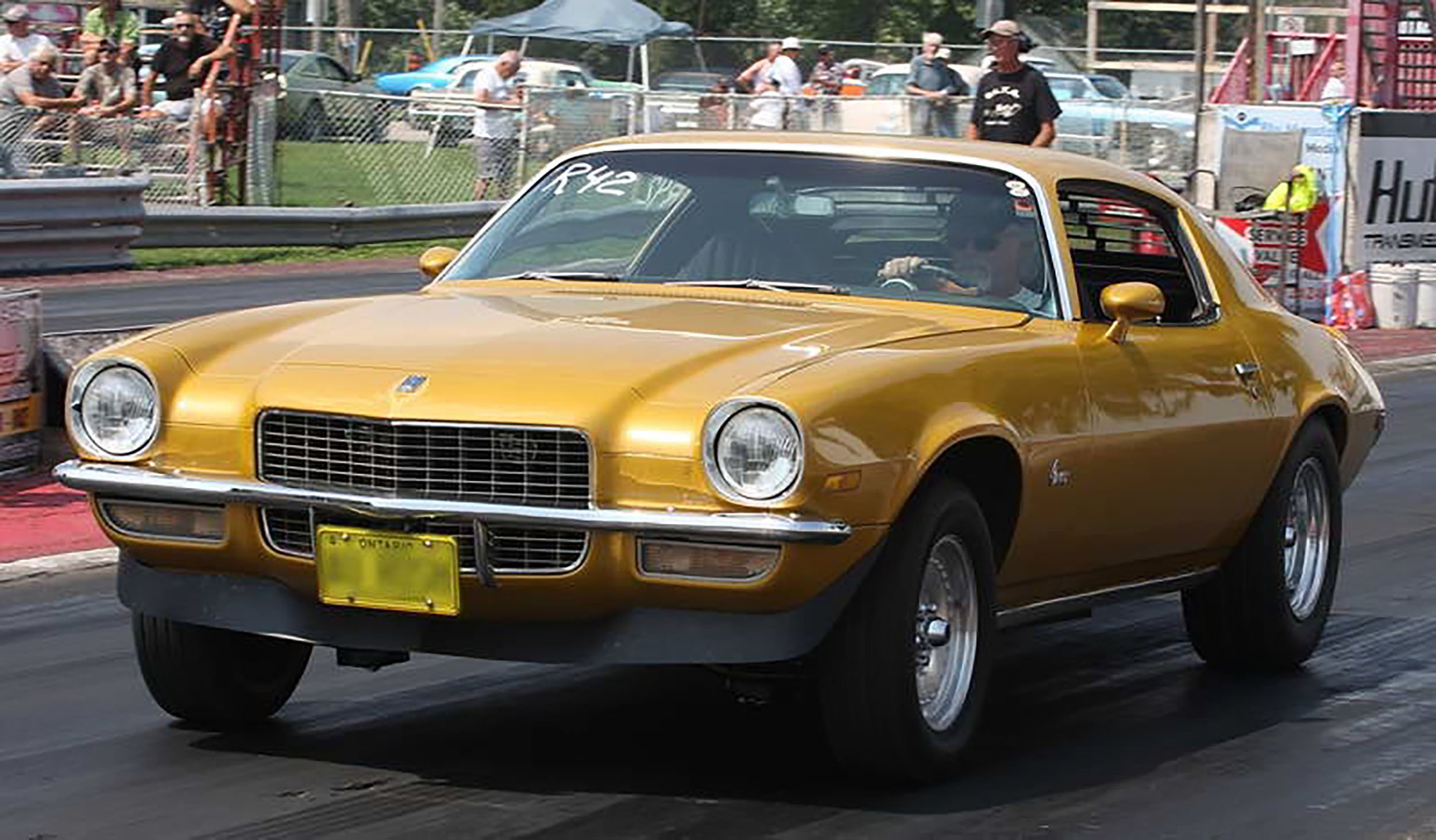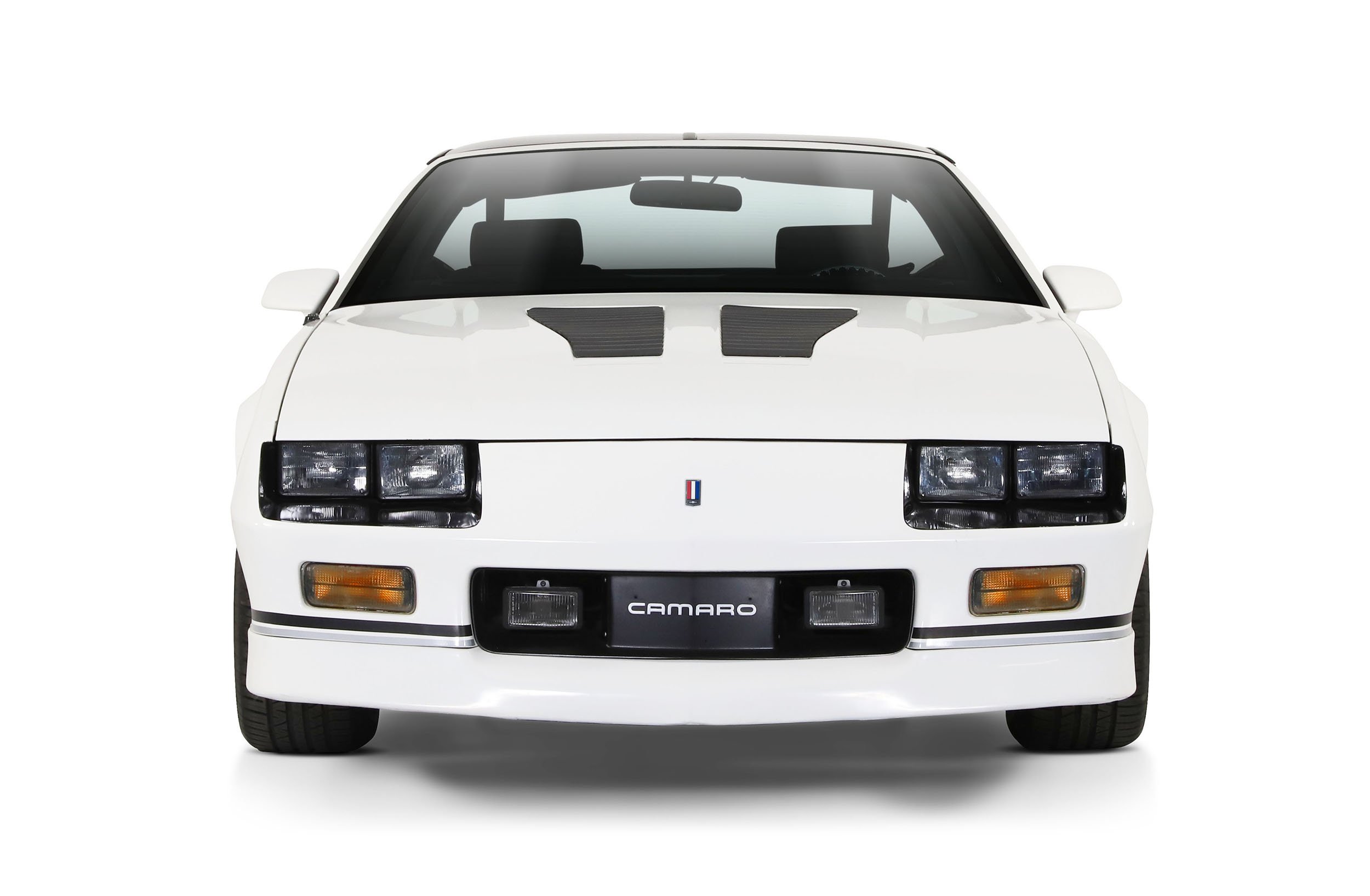You finally made the decision to get a car trailer. For years, you’ve been borrowing a friend’s hauler, but no more. You’re self-sufficient — and the new best friend to many without a trailer. But as great as your new trailer is, you learned the hard way it needs a few things. Might I suggest some lighting to help you strap your car down if it’s a late night at the track? And, nobody wants to think about it, but what if you or a buddy’s car breaks down and you need a winch? That’s why you need to give thought to a top-quality trailer battery.
Having a few battery-operated accessories can really make a trailer much more user friendly. But how do you install these accessories? And, once they are installed, how do you power them? When it comes to accessories, the sky’s the limit. In regards to powering those upgrades with a trailer battery, we got help from the folks at Optima Batteries.
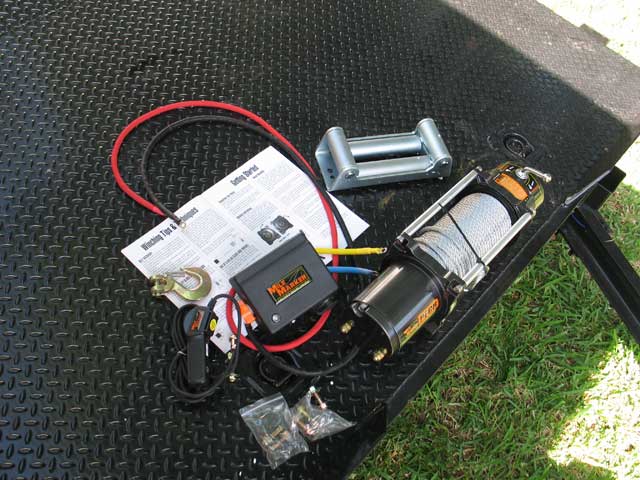
A winch is a great upgrade to any trailer. You never know when you might need it. This Mile Marker unit is rated with an amp draw of 90-plus, depending on how hard the car or truck you’re pulling resists moving. It is going to take a strong battery to keep it running.
The second previously mentioned scenario entered an evening in my life after I purchased a car trailer. I hadn’t given much thought to improving the trailer — it’s a trailer — you load the car and then unload the car. However, I was forced to give it some thought when a friend called and asked me to help him get his car home. It wouldn’t start, and I am less expensive than a tow truck.
The first obstacle we had to overcome was actually getting the car on the trailer. We are both carrying a few years under our belts and learned that pushing a car onto a trailer was no longer as easy as it used to be. Also, even with the help of a flashlight, strapping the car to the trailer was harder than it needed to be.
These small inconveniences are easy to overcome, but mounting a winch and a few lights, selecting a battery, and mounting said battery needed to be addressed. Where to mount the battery isn’t a hard decision, but you really need to know what battery you need so you also know what provisions to make to actually accommodate mounting it.
Choose Your Trailer Battery Wisely
Not all batteries are created equal. A typical battery that you find in a car (Starting Battery) is designed to simply start the engine. That’s the only real draw on the battery’s “juice.” Once the engine is running, the battery charge is then maintained with the help of the alternator. This type of battery must be able to deliver a large starting current for a short period of time. Once the engine finally starts, the alternator takes over and provides all the power the car needs. For this reason, a car battery may go through its entire life without ever experiencing more than a 10-percent loss of its total capacity.
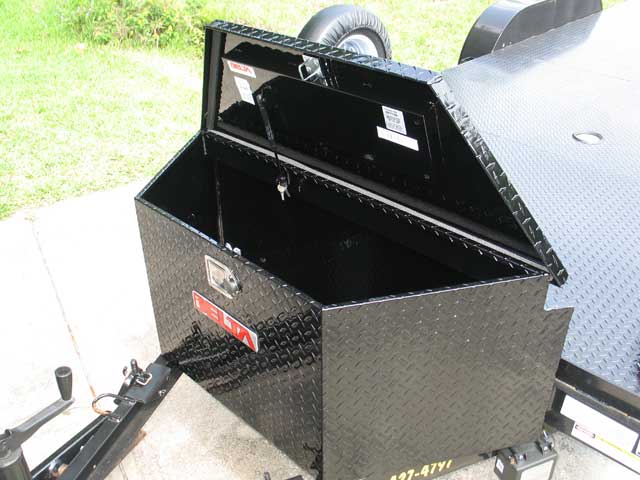
I knew I would need a place to store the tie-down straps and even the battery, so I purchased this tongue-mounted toolbox from Harbor Freight.
If a starting battery is used as a trailer battery and allowed to experience a deep discharge many times, its lifespan is drastically shortened. Starting batteries are rated in Cold Cranking Amps (CCA). CCA is the number of amps the battery can deliver at an ambient temperature of 0 degrees, for a period of 30 seconds, and not drop below 7.2 volts.
Properly Maintaining A Charge
[group_caption caption="" type="2" images="https://www.speednik.com/image/2019/04/trailer-battery-basics-with-optima-batteries-2019-04-09_19-31-13_930116.jpg, https://www.speednik.com/image/2019/04/trailer-battery-basics-with-optima-batteries-2019-04-09_19-31-20_266886.jpg"]
Maintaining a battery is paramount to it lasting for many years. While a traditional charger can charge your Optima, it can also damage it. Many people aren’t sure what constitutes the difference between a battery maintainer and a charger. The main thing to remember is a battery charger sends a constant charge to the battery. While charging, it might not realize the battery is fully charged, and continue forcing a charge. This means it’s possible to overcharge the battery with a charger — which can result in damage to the battery.
A battery maintainer on the other hand, can sense how much charge the battery needs and can slowly send a trickle charge to the battery over a period of time. Once the battery has reached a full charge, it stops charging. In other words, a battery maintainer will not overcharge a battery like a traditional charger can. This can help extend the life of the battery.
Optima has two battery charger/maintainers: The Digital 1200 and the Digital 400. The Digital 1200’s battery-maintaining function is perfect for long-term storage. The Digital 400 is a compact unit that will not only charge and maintain your battery, it can also recover deeply discharged batteries that other chargers can’t. Both chargers are compatible for use in automotive, truck, marine, motorcycle, lawn and garden, and RV applications.
A deep-cycle battery is rated by amp hours (Ah). The Ah rating denotes how many amps the battery can deliver for how many hours before it is discharged. The standard rating is an amp rating taken for 20 hours. In other words, a 100 Ah rated battery is defined as such: Draw 5 amps from the battery for 20 hours, and it will provide a total of 100 amp hours (5 x 20 = 100).
However, it’s important to understand the total time of discharge and load applied is not a linear. In other words, as your load increases, your realized capacity decreases. For example, if you discharged the same 100 Ah battery with a 100 amp load, it will not give you one hour of run time. Another rating to consider is Reserve Capacity (RC). This is the number of minutes (at 80-degrees ambient temperature) the battery can deliver 25 amps until it drops below 10.5 volts.
Deep Draws Call For Deep Cycle
If you take into account any winch being installed on any trailer will be a big draw on the battery, it stands to reason that a deep cycle’s ability to supply power for a longer period of time makes it the obvious choice over a starting battery’s high initial-power output which quickly dissipates.
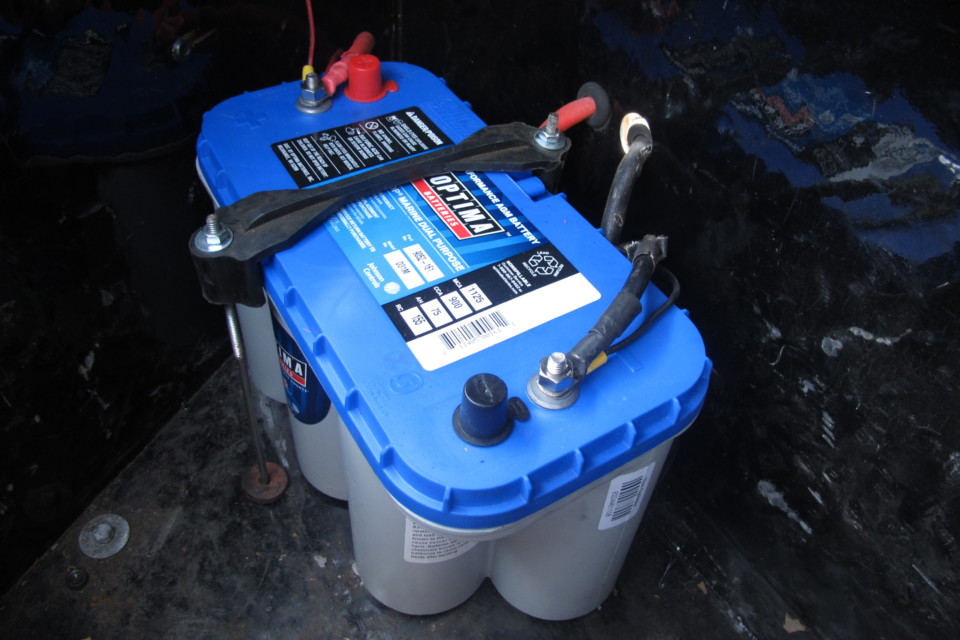
The tongue-mounted box is a great place to mount the battery when using it. Make sure the battery is securely fastened so it doesn’t bounce around inside the box.
Optima makes two deep-cycle batteries: BLUETOP and YELLOWTOP. According to the Optima website, the YELLOWTOP is best suited when electrical loads are higher than average, or when the discharge cycle is more than that of typical engine starting. These are well-suited for use as trailer batteries, in RVs, and vehicles without alternators. This also includes vehicles with significant electrical loads which may exceed the average alternator output (for example, aftermarket audio systems, winches, snowplows, inverters, and drag race cars). This can also include vehicles with a lot of electronics from the factory, such as a minivan with power sliding doors and a DVD player, especially if the DVD player is used when the engine isn’t running.
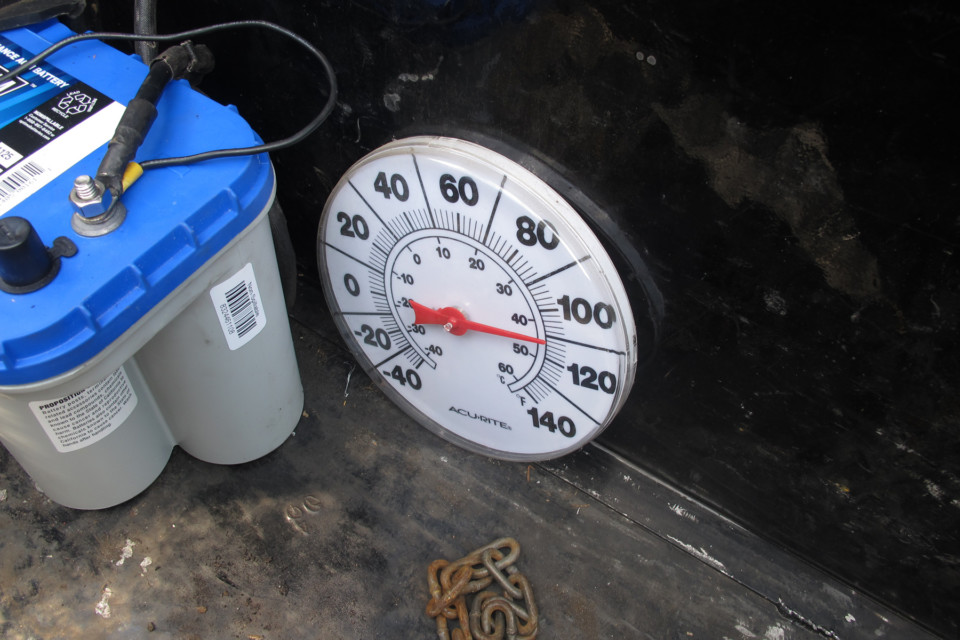
One of the quickest ways to shorten the life of a battery is to store it in a hot environment. The temperature in the box quickly hit 110 degrees after only one hour. Imagine how hot it could get all day, every day, and how much it can affect the battery.
There are actually two BLUETOP batteries. One has a dark case, which is classified as a marine battery. This is a starting battery. It should never be used for cycling duty. There is a dual-purpose BLUETOP with a light-gray case that can be used for both starting and deep cycling. This one is a true deep-cycle battery with extremely high cranking power. The BLUETOP batteries have both
For my trailer, I decided to utilize the BLUETOP (D31M) with the light-gray case. I installed this one because I can also use it as a “jump-start” battery if needed. Optima considers this a high-performance AGM (Absorbed Glass Mat) battery for prolonged usage times, and it offers more available recharges than you’d get out of a traditional battery. It also has both automotive and stud-mount capabilities. With 900 CCA and a 75 Ah rating, this should make the perfect battery for jump starting, using a winch, a few trailer-mounted lights, and at least one portable trouble light that I can use while at the track or wherever.
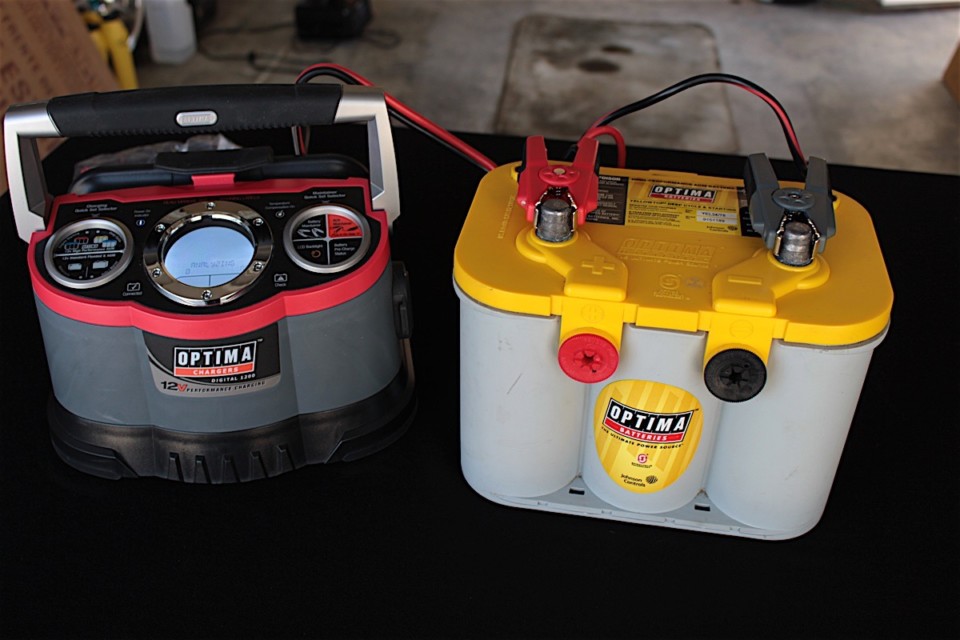
Storing the battery in a cool and dry environment will prolong battery life. Also keep it on a battery maintainer like this Digital 1200 unit from Optima. The Digital 1200 will not only charge and maintain your battery, it can also recharge batteries that have been deeply discharged when other chargers can’t.
A Battery For Every Situation
Optima’s REDTOP is a starting battery that can be used in most vehicles (cars, trucks, some machinery), for normal engine starting. When using a REDTOP battery, an alternator should be part of the system to monitor and maintain the state of charge.
The YELLOWTOP battery is a deep-cycle battery that can be used in cars when electrical loads are higher than average. This is a great option when the discharge cycle is more than typical engine starting (vehicles without alternators). This also includes vehicles with high electrical loads that may exceed the average alternator’s output (i.e., drag cars).
The BLUETOP with a dark gray case is a dual-purpose marine battery to be used when a dedicated starting battery is required. It should never be used for cycling duty (i.e., running accessories and not being recharged while used). If you have accessories that need to be running while no recharge is occurring, the dual-purpose BLUETOP with a light gray case can be used for both starting and deep cycling. It is a true deep-cycle battery with extremely high cranking power.
The difference between The BLUETOP and YELLOWTOP deep-cycle batteries, is the BLUETOP has both automotive (SAE) posts and threaded studs. The YELLOWTOP (except D31T) only have SAE-style terminals.
If you ever get confused about the colored tops of Optima Batteries, just remember: if it has a dark gray case, then it’s a starting battery; if it has a light gray case, then it’s a deep-cycle (dual-purpose) battery.
Now that the trailer has the Optima battery, winch, and enough accessory lighting to do whatever I need, making another late-night recovery of a friend’s car will no longer leave me tired from pushing, or frustrated from strapping the car down in the dark — literally.


